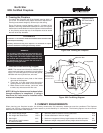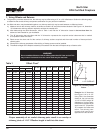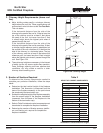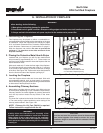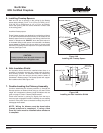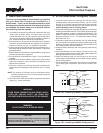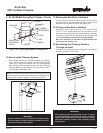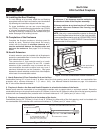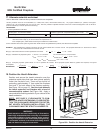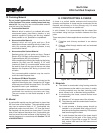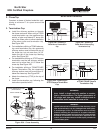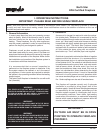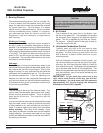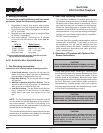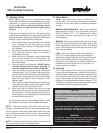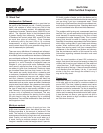Special offers from our partners!

Find Replacement BBQ Parts for 20,308 Models. Repair your BBQ today.

480-1081 18 4-03
North Star
EPA Certied Fireplace
WARNING!
Hearth extensions are to be installed only as illustrated to
prevent high temperatures from occurring on concealed
combustible materials. Hearth sealing strips prevent
burning or hot particles from inadvertently falling directly
on combustible surfaces in the event the building should
settle and disturb the original construction.
Seal with non-
combustible sealant
Figure 18A - Position the Hearth Extension
18. Position the Hearth Extension
Position and secure the hearth extension over the
protective metal strips that have been placed partially
under the fireplace front. These strips should be
protruding approximately 2” from under the replace
front and 2” on both sides of the replace opening.
See Figure 13A on page 13. Seal the crack between
the hearth extension and replace with a bead of
noncombustible sealant. See Figure 18A. Apply a
noncombustible nishing material of your choice to the
hearth extension.
NOTE:
SEE PAGE 5 “CLEARANCES TO COM-
BUSTILES, HEARTH EXTENSIONS / FLOOR PROTEC-
TION” FOR CLEARANCES REQUIRED FOR DIFFER-
ENT HEARTH EXTENSION INSTALLATIONS. THE
CLEARANCES MUST BE STRICTLY ADHERED TO.
How to determine if alternate oor protection materials are acceptable:
All oor protection must be non-combustible (i.e., metals, brick, stone, mineral ber boards, etc.). Any organic materials (i.e., plastics, wood paper
products, etc.) are combustible and must not be used. The oor protection specied includes some form of thermal designation such as R-value
(thermal resistance) or k-factor (thermal conductivity).
PROCEDURE:
1. Convert specication to R-value:
2. Determine the R-value of the proposed alternate oor protector.
i. Use the formula in step (1) to convert values not expressed as “R”.
ii. For multiple layers, add R-values of each layer to determine overall R-value.
3. If the overall R-value of the system is greater than the R-value of the specied oor protector, the alternate is acceptable.
EXAMPLE: The specied oor protector should be 3/4 inch thick material with a k-factor of 0.84. The proposed alternate is 4” brick with an r-factor
of 0.2 over 1/8” mineral board with a k-factor of 0.29.
Step (a): Use formula above to convert specication to R-value.
Step (b): Calculate R of proposed system.
=
1
.84
R =
x T
1
k
x 0.75 = 0.893
R
brick
= 0.2 x 4 = 0.431
4" brick of r = 0.2, therefore:
1/8" mineral board of k = 0.29, therefore:
R
mineral board
=
1
0.29
x 0.125 = 0.431
R
total
= R
brick
+ R
mineral board
= 0.8 + 0.431 = 1.231
Step (c): Compare proposed system R
total
of 1.231 to specified R of 0.893. Since proposed system R
total
is greater than required, the system
is acceptable.
DEFINITIONS
1
k
Btu(in)
ft
2
(hr)(
o
F)
= K x 12
(ft
2
)(hr)(
o
F)
Btu
R =
k =
K =
r =
(ft
2
)(hr)(
o
F)
(Btu)(in)
=
Btu(ft)
ft
2
(hr)(
o
F)
R =
x T
1
k
R =
x T
1
K x 12
k-factor is given with a required thickness (T) in inches:
K-factor is given with a required thickness (T) in inches:
r-factor is given with a required thickness (T) in inches: R = r x T
R-value given - no conversion needed.
R =
x T
1
K x 12
R =
x T
1
k
17. Alternate materials worksheet



